Archaeology & History
A First-of-Its-Kind Prehistoric Monument Is Found in France
The 15-acre site is scattered with remnants from various eras, presenting a puzzle to researchers.
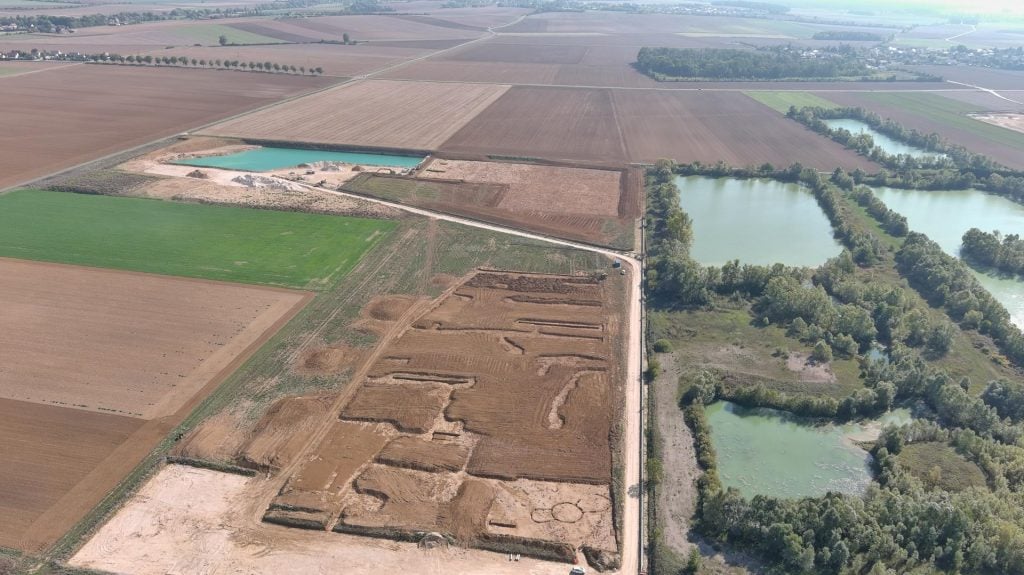
A team of French archaeologists have discovered a prehistoric site in the commune of Marliens, just 12 miles southeast of Dijon—the first of its kind to be found in France.
Researchers from the National Institute for Preventive Archaeological Research (Inrap) excavated a 15-acre site with the remnants of numerous enclosures, all scattered with relics dating to disparate eras, from prehistory through the early Iron Age (1200–500 B.C.E.) “This type of monument seems unprecedented and currently no comparison has been possible,” Inrap said in a statement.
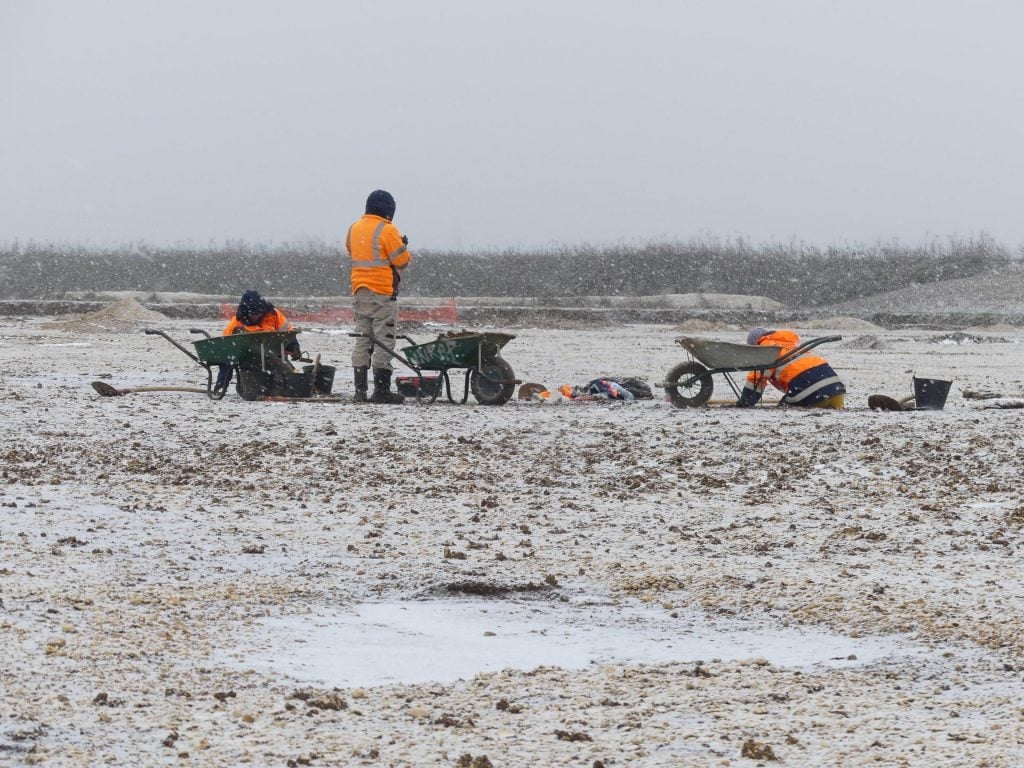
Search in progress. Courtesy of Inrap
Excavations concluded in February. The most visually compelling subject the team is examining is a potentially prehistoric network of interlocking enclosures. The circular one in the center measures over 36 feet in diameter. It has a horseshoe-shaped enclosure jutting off over 26 feet to the north, as well as an open-ended southern appendage.
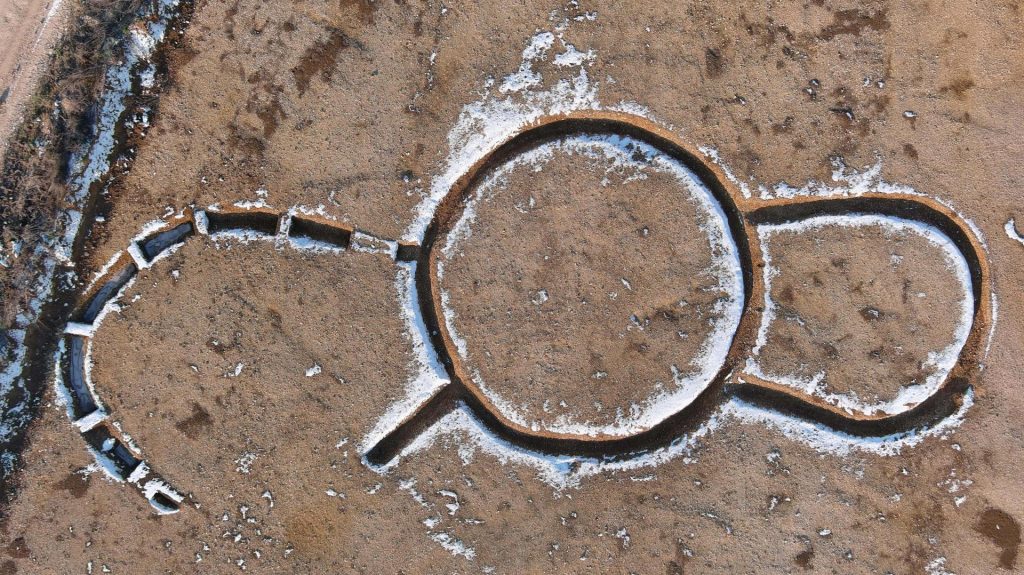
Aerial view of the triple enclosure. Courtesy of Inrap.
A layer of gravel that archaeologists found in the two abutting enclosures at first suggested that these shapes were made contemporaneously, but the cut flint artifacts found nearby point to the Neolithic era (10,000–2200 B.C.E.). Inrap is conducting radiocarbon analyses to more accurately date the mystifying site. Nearby clay wells from the Bronze Age (3300–1200 B.C.E.) record the valley’s makeup in its heyday.
Researchers also found a bundle of seven flint arrowheads, two archer’s braces, a flint lighter, and a copper alloy dagger all tentatively dated to the Bell Beaker period (2450–2300 B.C.E.) buried just below nearby topsoil, “in a very level structure.” One of the armbands contained traces of iron oxide indicative of pyrite, also known as fool’s gold, a reliable fire starter. While a collection like this would typically connote a burial, their shallow location left that hypothesis yet unconfirmed. Inrap hopes analysis of the copper alloy on the dagger will provide factual insight into its date of origin and provide more information on trade at the time.
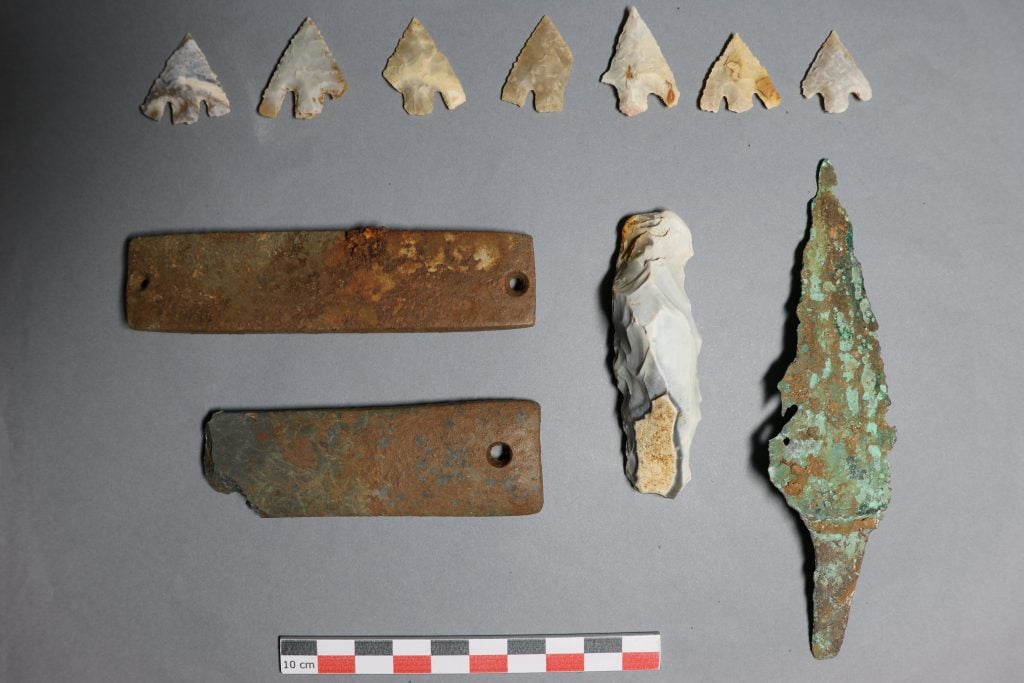
Proposed Bell Beaker artifacts. Courtesy of Inrap.
Inrap also examined a necropolis of five circular enclosures—one sealed and four not—spread across an area measuring approximately 1.5 acres. While the soil there was too acidic to leave any complete burials behind, investigators did find remains of burials alongside a funeral pyre in the largest open enclosure, with a diameter measuring nearly 79 feet. The team presently dates this full series of enclosures between 1500 and 1300 B.C.E. based on five copper alloy pins and a necklace strung with amber beads which they found in that same large, open enclosure. Its cohorts held ceramic shards.
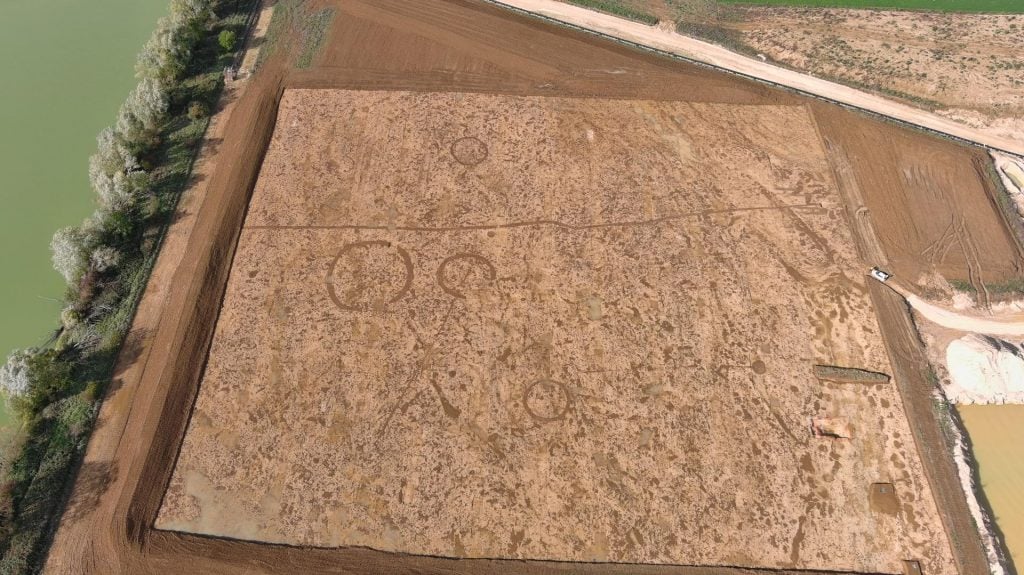
View of the five enclosures in the necropolis. Courtesy of Inrap.
About 1,300 feet away, the final necropolis held six urns from the early Iron Age (1200–500 B.C.E.), each covered with a lid, filled with single bone deposits, and, in some instances, metal jewelry. The cremated bones are undergoing examination to learn more about Iron Age funerary practices.
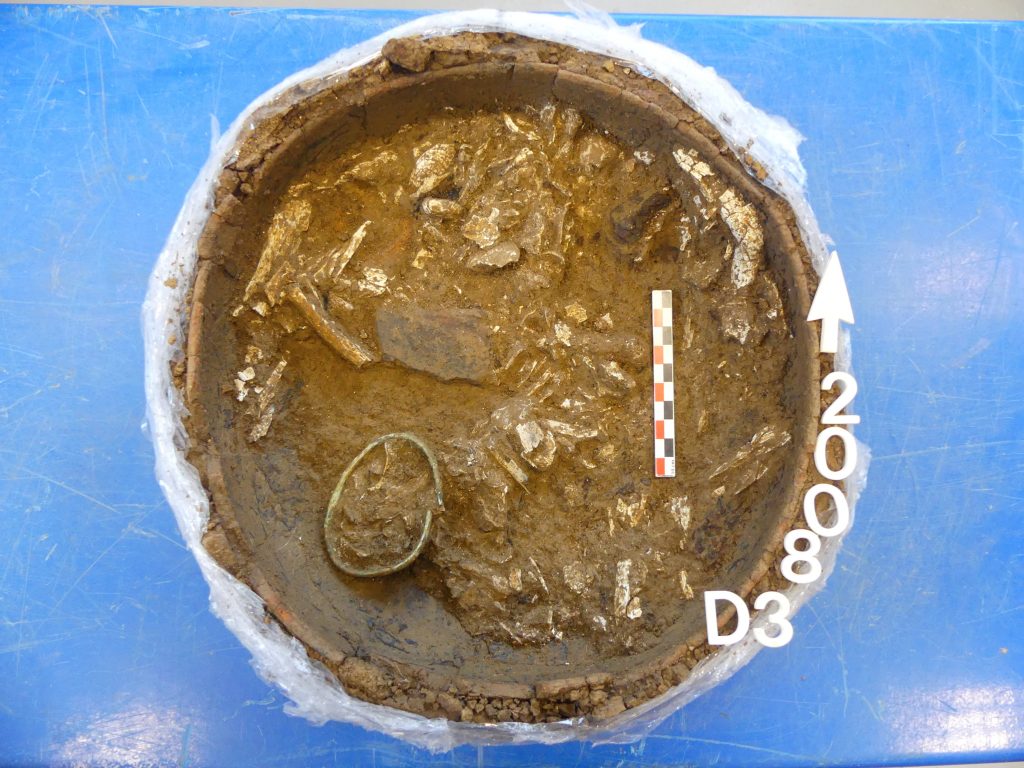
Bracelet discovered during the excavation of an incineration. Photo by Luc Staniaszek, courtesy of Inrap
Inrap noted that small necropolises like these, measuring 1,000 square feet, are already difficult to identify—but this is also the first time any such complex has been excavated in this part of France. Further study will situate this revelation of the Ouche plain’s apparently storied past within history.





